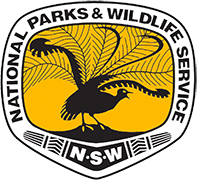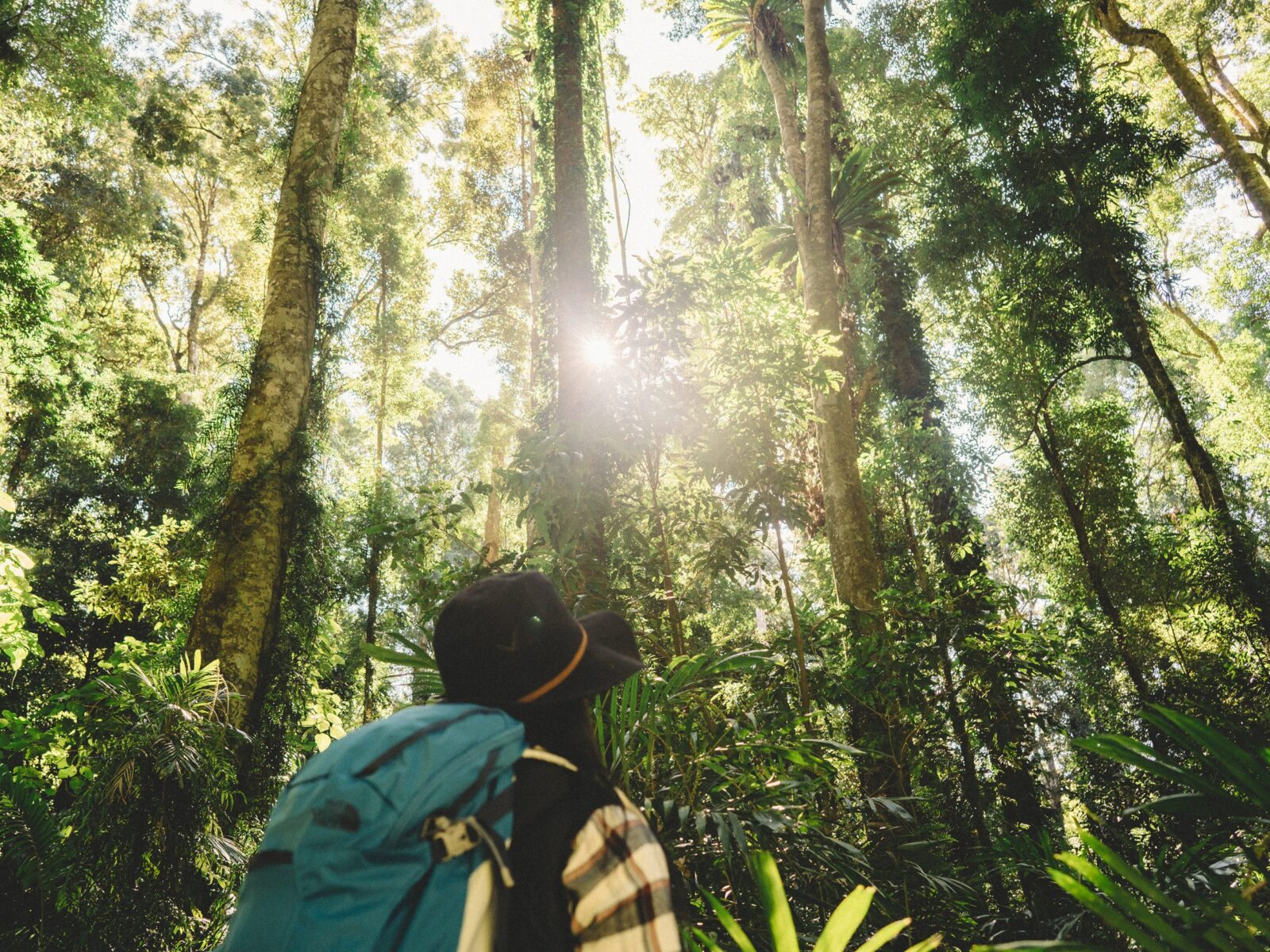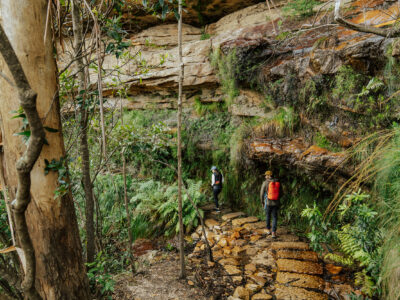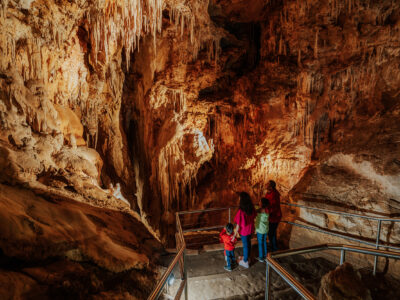The perfectly ordinary tree in the corner of my childhood suburban backyard was a tree of many talents. It provided a shady spot to eat melting ice blocks on hot summer days. It held the amateur bird feeding station I made in high school woodwork class which, to everyone’s surprise, worked and brought native birds flocking in. Its sturdy branches were the perfect base for an elaborate treehouse which was constantly under-construction.
All over NSW national parks there are multi-talented native trees, a little more glamorous and impressive than the one in my backyard. Let’s take a closer look at the greenery…
-
Talent: Artistic flair
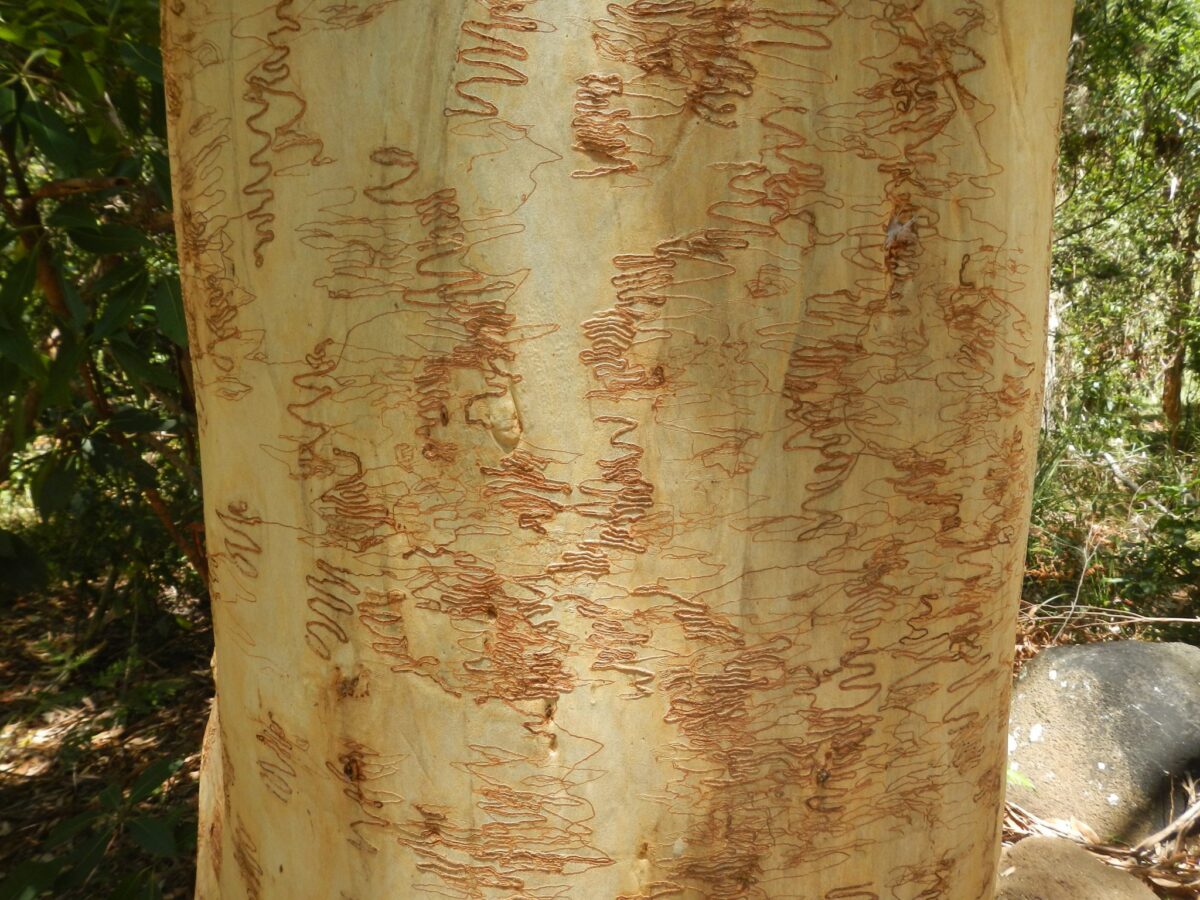 Photo Information
Photo InformationScribbly Gum, Eucalyptus haemastoma
Hat Head National Park
Debby McGerty/DPIE
Scribbly gum / Eucalyptus haemastoma
You can skip the art gallery because, with striking zig-zag patterns on its smooth yellow, white, or silver grey trunk, the scribbly gum is a living canvas. The painters making these experimental modern art ‘scribbles’ are actually moth larvae, as they tunnel between the old and new layers of bark. Every year when the tree sheds its old bark, the new markings are revealed.
You’ll spot this arty eucalyptus in the coastal plains and hills areas of NSW, especially around Sydney’s Heathcote, Ku-ring-gai Chase, Muogamarra and the Blue Mountains national parks.
Top tips: to leave the bush how you found it.
-
Talent: Being really old, dinosaur-era old
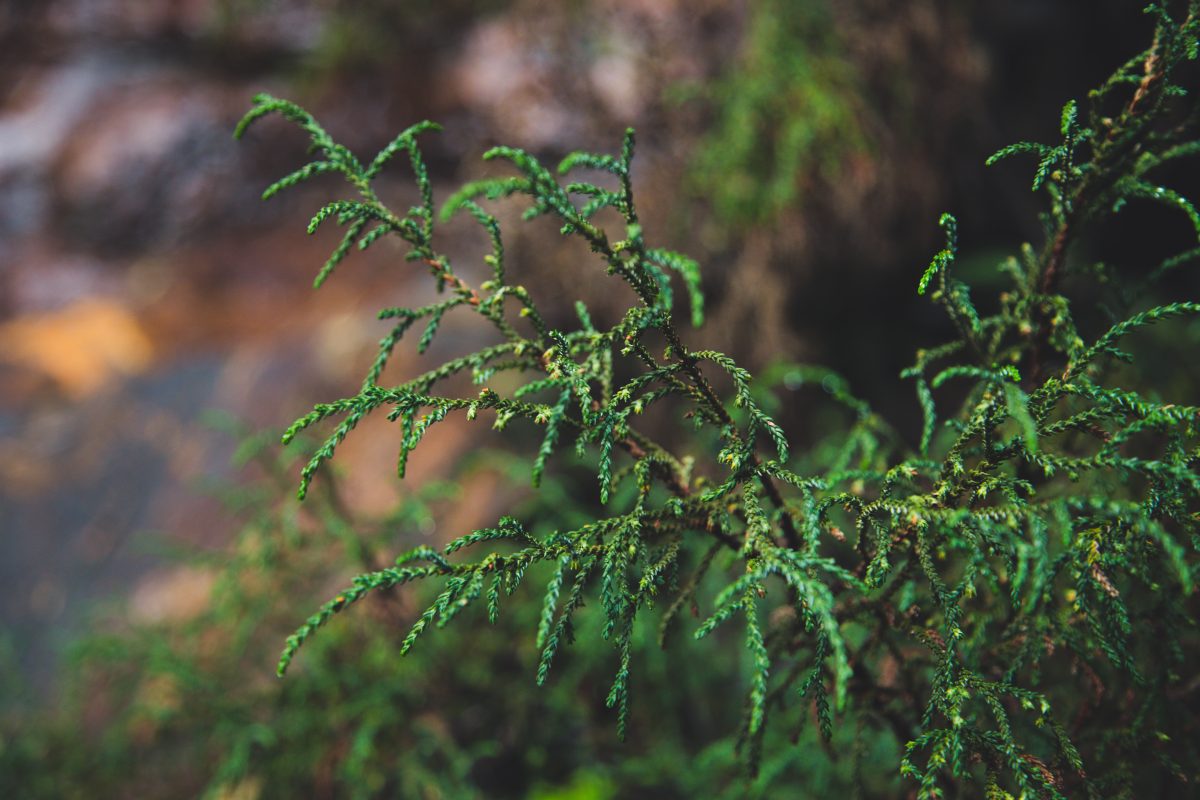 Photo Information
Photo InformationDwarf mountain pine
Wentworth Falls walking track
Dan Parsons / DPE
Dwarf Mountain Pine / Pherosphaera fitzgeraldii
This special little pine is a relic species that has outlived the dinosaurs and is what we call a ‘Gondwana-era’ plant, from more than 200 million years ago. It is found only within a 9km range of cliff line in the upper Blue Mountains National Park between Wentworth Falls and Katoomba and lives in the spray zone or drip areas around waterfalls on steep sandstone cliffs, ledges or below overhangs. It is listed as endangered and vulnerable to extinction from natural or human-caused events because of its small population size, the super limited area it lives and its low ability to reproduce. But in good news, the pine’s home has now been given an ultra-exclusive title (and some pretty amazing protections) as an ‘Asset of Intergenerational Significance’.
Did you know: Assets of Intergenerational Significance (AIS) can be any area of exceptional value – natural or cultural – that warrants special protection, like the 9km home of the Dwarf Mountain Pine. Declaring an AIS means NSW National Parks and Wildlife Service can focus more on managing this place and intervene if there are threats to the species that live there.
-
Talent: Being tallest
View this post on InstagramThe Grandis / Eucalyptus grandi
Is being really, really tall a ‘talent’? We’ll call it one, so we can include this incredible tree. The Grandis, found in the lush coastal forest on the edge of Myall Lakes National Park, north of Bulahdelah, is NSW’s tallest known tree. Towering above the canopy at over 70 metres high, with a huge 11.5 metre circumference base, this magnificent flooded gum has been here for over 400 years. This forest giant is easy to get to via Grandis picnic area and boardwalk… but so big it’s hard to capture in one photo!
-
Talent: Ultimate drought-buster
 Photo Information
Photo InformationOutdoor Pastoral Museum early European bush life on display.
Outdoor Pastoral Museum
Sturt National Park
Parks Australia
Mulga / Acacia aneura
The mulga is a hardy wattle tree, sporting pretty spikes of bright yellow flowers which bloom after rain. You’ll find it in dry outback areas like Gundabooka and Paroo-Darling national parks.
Its special talent is being an extremely clever water saver, using an impressive natural plumbing system. It has an unusually long taproot which goes deep into the soil, and a sophisticated arrangement of branches that tunnels all-important water to the stem. Droughts? Never heard of ‘em!
-
Talent: Most photogenic
 Photo Information
Photo InformationSnow gum / Eucalyptus pauciflora
Kosciuszko National Park
E Sheargold credit /DPIE
Snow gum / Eucalyptus pauciflora
Snow gum / Eucalyptus pauciflora
At home in the alpine and tablelands areas in NSW, the glamorous snow gum has a dramatically twisted, stunted trunk and branches made by the blasting effects of wind, snow and ice. Its warped form, smooth grey-cream bark and glossy, waxy leaves against the backdrop of crisp white snow and rugged mountain landscapes make this tree species an irresistible wintry model.
Did you know: A trip to Kosciuszko National Park will get you up close to these beauties. Try the Snow Gums boardwalk near Charlotte Pass, or Dead Horse Gap walking track near Thredbo.
-
Talent: A tree-hugging legacy
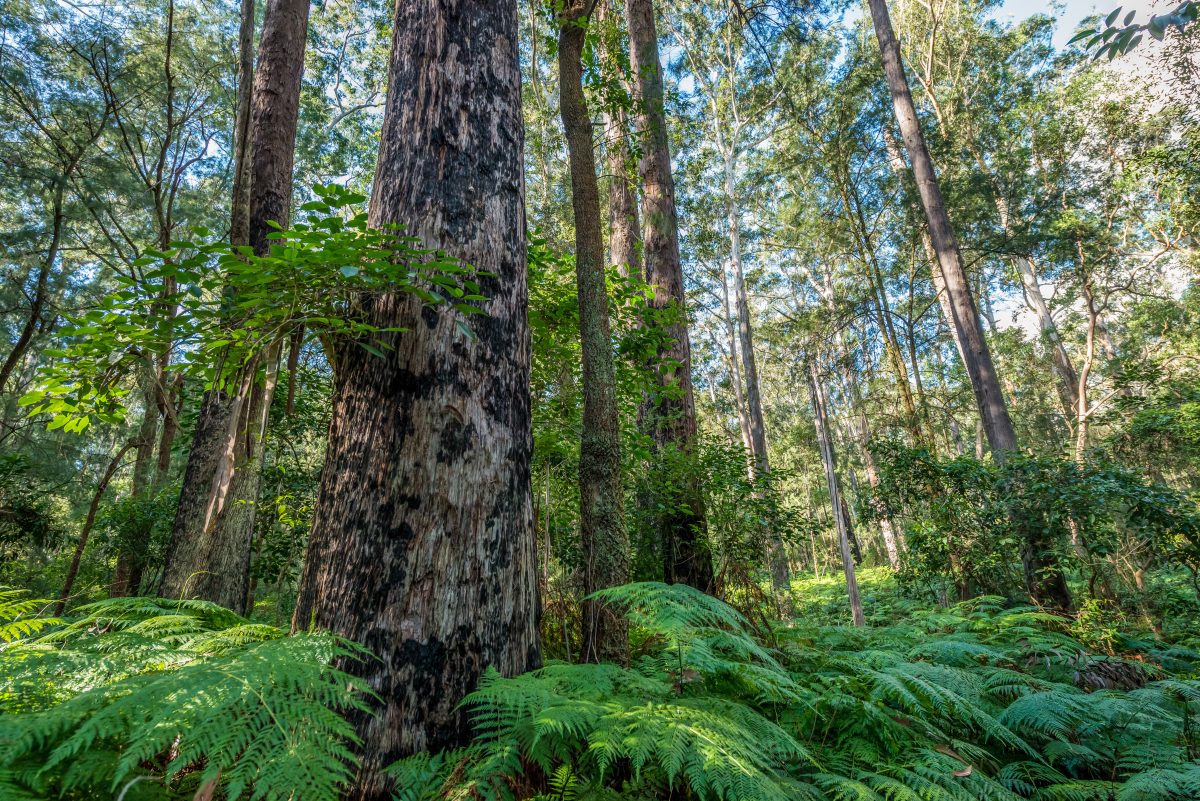 Photo Information
Photo InformationEucalyptus blue gum trees (Eucalyptus globulus) and Australian tree ferns (Dicksonia antarctica).
John Spencer / DPIE
Blue gum / Eucalyptus deanei
In a deep canyon of the Grose Valley in World-Heritage listed Blue Mountains National Park lies the Blue Gum Forest. The magnificent blue gums here tower up to 65 metres from the valley floor, with their top branches and leaves growing so close together that they form a ceiling to make what’s known as a ‘closed forest’.
What’s a ‘closed forest’? A closed forest is a dense growth of trees in which the top branches and leaves form a ceiling, or canopy, that sunlight can barely shine through to reach the forest floor. Despite their closeness, the branches rarely touch directly.
The blue gums here were saved from being cleared back in the 1930s by a group of dedicated bushwalkers who managed to pool their money together to raise the 130 pounds (a huge sum at the time) needed to buy the patch of trees from a farmer. These maverick nature-lovers preserved the blue gums for future generations in what might be Australia’s first public environmental campaign.
-
Talent: Survival skills
 Photo Information
Photo InformationNightcap National Park
Justin Mallee / DPE
Nightcap Oak / Eidothea hardeniana
The tale of the prehistoric Nightcap Oak rivals even the most unbelievable of survival stories. The critically endangered tree has survived in the rainforests of the Nightcap Range in northern NSW for about 40 million years.
In November 2019, a lightning strike caused bushfires to sweep through its habitat which could have wiped out the species forever. But just months later, ruby red shoots were spotted sprouting from the blackened stumps of even some of the most badly burned trees. How did it survive? The Nightcap oak has a unique superpower – it can self-reproduce its own stems and trunks.
View this post on InstagramSpeaking of great survivors, the Wollemi pine has also been around for over 100 millions of years – from way back in the dinosaur era! Check out The legendary Wollemi Pine story here.
-
Talent: Erosion fighter
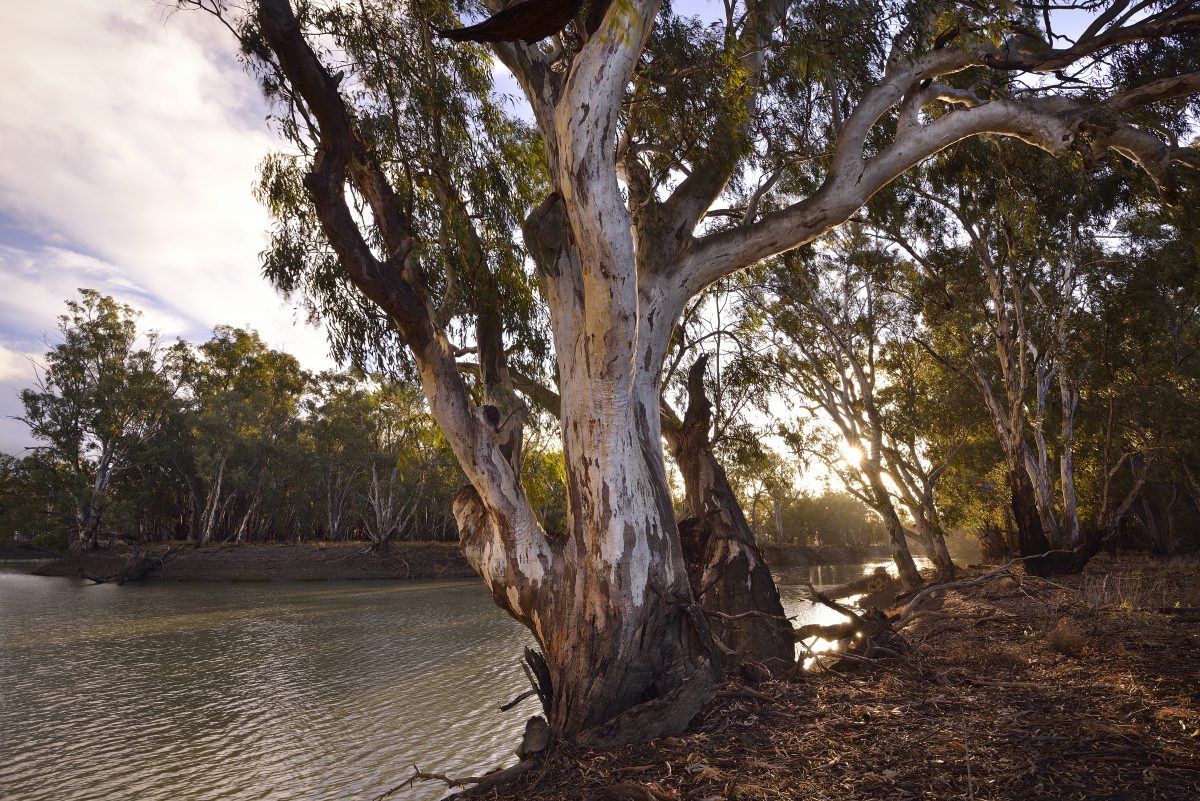 Photo Information
Photo InformationRiver red gum
Gavin Hansford / DPIE
River red gum / Eucalyptus camaldulensis
The hero of the Murray-Darling Basin is the river red gum – a majestic eucalypt tree which grows to 30 metres tall. The main talent of river red gum forests is being a trusty cornerstone of the basin’s internationally significant protected wetlands, reducing erosion along the banks, and providing a home for many threatened species while they’re at it.
A great place to see these majestic trees is the Murray Valley National Park, which is part of the largest red gum forest in the world. The Murray River’s red gums may drop large branches at any time without warning, so it is important to rest in an area that is clear of large trees.
Did you know: The forests along the Murray River were thought to be among the most densely populated areas before European arrival. The area is rich in Aboriginal cultural heritage including burial sites, scarred trees, oven mounds and shell middens.
NSW national parks are home to some jaw-droppingly impressive tree species, each playing an important part for the environment they are in.
So who wins the tree talent show in the end? This one has to be a tie.
Remember: national parks are natural and unpredictable enviroments. Always plan your adventure for all weather conditions, check and stay up-to-date on parks alerts, and read our tips on bushwalking safety.
